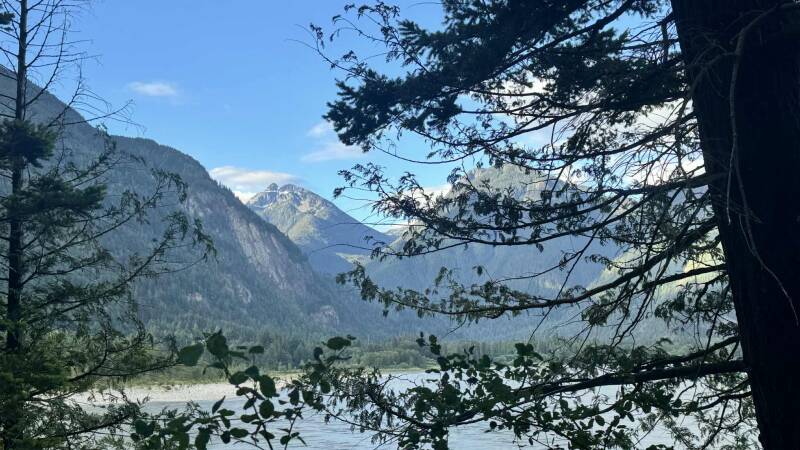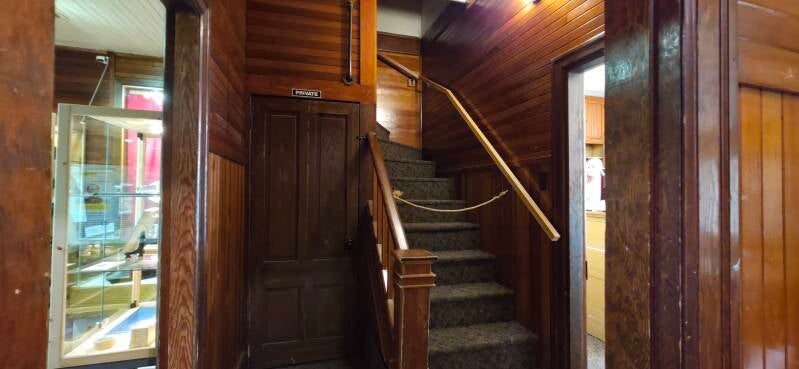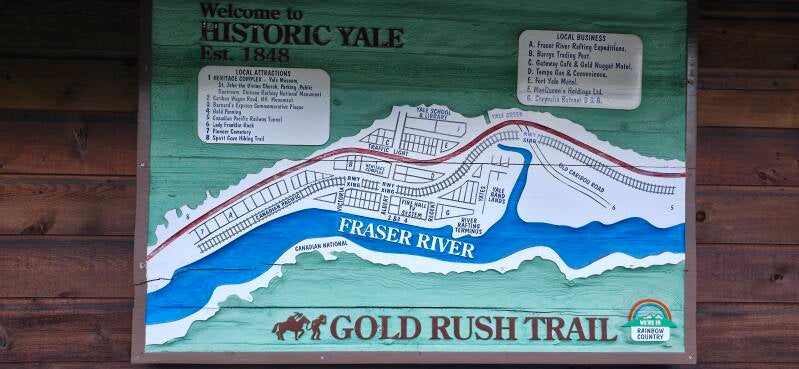Exploring a Town that Changed BC - Yale and the Fraser Canyon
Tucked along the banks of the Fraser River, surrounded by steep canyon walls and towering evergreens, lies the historic town of Yale. Today it feels quiet and unassuming, but in the mid-1800s this was one of the wildest and most important towns in all of British Columbia. From its early days as a Hudson’s Bay Company fur trading post to the chaos of the Fraser River Gold Rush, and later as the gateway to the Cariboo Wagon Road, Yale quite literally helped shape the province we know today.
For us, it wasn’t just a stop on the highway. It was a chance to step into a living time capsule, to walk the same ground that tens of thousands once rushed across in search of fortune.
Last Updated August 2025
Camping in Hope, BC
Our journey began just south of Yale in Hope, BC. On our way through, we first tried to get a site at Emory Creek Provincial Campground, located about halfway between Hope and Yale. Nestled right along the Fraser River, Emory Creek offers a more rustic, natural setting with tall evergreens providing shade and the steady sound of the river nearby. It’s a favorite for campers looking for a quiet spot away from town, and with its beautiful riverside sites it tends to fill up quickly — especially on weekends and in the summer months. Unfortunately, when we arrived, every site was already taken.
Thankfully, we found space at the Telte-Yet Campground back in Hope. We pulled in without a reservation and managed to snag a great site right on the river. The campground offers a mix of first-come, first-served sites and reservable sites, with both tent sites and serviced sites with power and water. The bathrooms and showers were impressively clean, and the staff couldn’t have been more friendly or welcoming.
The Fraser River rolled by just beyond our campsite, its currents carrying echoes of the past when sternwheelers ferried miners and supplies upriver toward Yale. As night fell, live music from the park drifted through camp, adding a little magic to the evening as we cooked a simple dehydrated dinner and settled by the fire.




💡 Traveler’s Tip
Emory Creek is beautiful but fills up quickly — arrive early if you’re hoping for a riverside site. If it’s full, Telte-Yet Campground in Hope is an excellent alternative with clean facilities, serviced sites, and the bonus of being within walking distance to shops, restaurants, and pubs.

Stepping Into History - Yale Historic Site
The next morning, we drove north along Highway 1 — a short, scenic 20-minute ride into the canyon. The road follows the river much like the old wagon road once did, only today we travel in comfort compared to those who made the same journey by foot, horse, or stagecoach.
The Yale Historic Site is right off the highway.
The site is open from May 1 to September 30 (Wednesday to Sunday, 10 am – 5 pm), with admission rates for 2025 as follows:
-
Adults: $12.00
-
Seniors (65+): $10.00
-
Students (with ID): $10.00
-
Youth (13–17): $8.50
-
Children (6–12): $6.00
-
Under 6: FREE
You can explore on your own or join a guided tour. We chose the self-guided tour so we could take our time, snap photos, and really immerse ourselves in the history.



💡 Traveler’s Tip
If you’d like more time, ask about after-hours access — the caretakers sometimes open the grounds by request.
Creighton House – Life in a Gold Rush Town
Our first stop was the Creighton House, built in the 1870s. Walking through the doorway feels like crossing into another century. David James Creighton, who emigrated from Ireland, made his mark in Yale as a businessman. He ran a store, hotel, restaurant, and even an orchard. His family’s story is woven into Yale’s history: their marriages, children, and even tragedies reflect the life of a frontier town where fortunes could rise and fall overnight.
The Creighton House still carries the smell of old wood, its original craftsmanship preserved. Displays fill the first floor, while the upper rooms remain roped off....a reminder that history is fragile, yet still present.



St. John the Divine Church & the Copper Beech Tree
Across the grounds, the St. John the Divine Anglican Church, built in 1863, still stands proudly. Inside, sunlight spills through stained glass windows, casting color across worn wooden pews. This is where David Creighton married Mary Alice, and where countless others marked their moments of joy, sorrow, and faith.
Outside is one of Yale’s treasures: a massive Copper Beech Tree, brought over from Great Britain and planted by a young girl the year the church was built. Today it towers above, its branches sheltering the old rectory foundation beside it. To stand beneath it is to realize that while people came and went, some roots — quite literally — endured.
Tent City – Echoes of the Gold Rush
One of the most fascinating parts of the site is the replica tent city. In 1858, when gold was discovered at Hill’s Bar just south of Yale, a frenzy began. Word spread as far as California, and within weeks, thousands of miners flooded north. Yale exploded into a boomtown almost overnight.
Saloons, supply tents, and makeshift homes filled the riverbanks. Imagine the noise: hammers pounding, voices shouting in a dozen languages, the clang of gold pans against rock. For a brief moment, Yale was one of the largest towns north of San Francisco, and it was said that fortunes were won — and lost — in a single night.


💡 Traveler’s Tip
Don’t forget to sign the guest book at the Historic Site. It helps with grant funding that keeps places like Yale alive for future generations.
Pioneer Cemetery – A Resting Place of Stories
Just a short drive back toward Hope lies the Pioneer Cemetery, one of the oldest in British Columbia. Established in 1858, it holds the names of families like the Creightons and Teagues. Many original headstones were washed away in the 1960 flood, but among the overgrowth, you can still find weathered markers — each one a story cut into stone.
A poem called “The Pioneers” greets visitors at the gate, reminding us that these lives, though often forgotten, helped shape the land we walk on today. As we wandered, I couldn’t help but wonder what it was like for them — carving a life out of this rugged canyon, chasing opportunity, facing loss.



💡 Traveler’s Tip
Parking is limited here. Use a pullout along the highway and wear sturdy shoes — some stones are hidden deep in the brush.
The Cariboo Wagon Road – A Road Through the Wilderness
Yale wasn’t just a gold town; it was the starting point of the Cariboo Wagon Road, an engineering marvel built between 1862 and 1865. Stretching 650 km to Barkerville, it opened up the wild interior and allowed supplies — and people — to flow north.
Standing there, it’s easy to picture stagecoaches rolling out of Yale, kicking up dust, packed with miners, goods, and the occasional fortune seeker hoping the road led them to riches. Some of the old roadhouses that dotted the trail still stand today, silent reminders of an era when travel was slow, rough, and dangerous.



Following the Old Wagon Road
Before leaving, we tracked down a piece of the original Cariboo Wagon Road leading down toward the Fraser. The path is narrow and overgrown, but you can still trace its route to the water’s edge. Nearby, an old train tunnel, still in use, cuts through the rock — a reminder that even as transport changed, Yale remained a gateway.
Looking out at the Fraser, its waters muddy and fast, I thought of the steamboats that once battled this current. In fact, Yale was the head of navigation; beyond here, the river became too treacherous. This was the end of the line, the last port, and the beginning of the hard road north.


